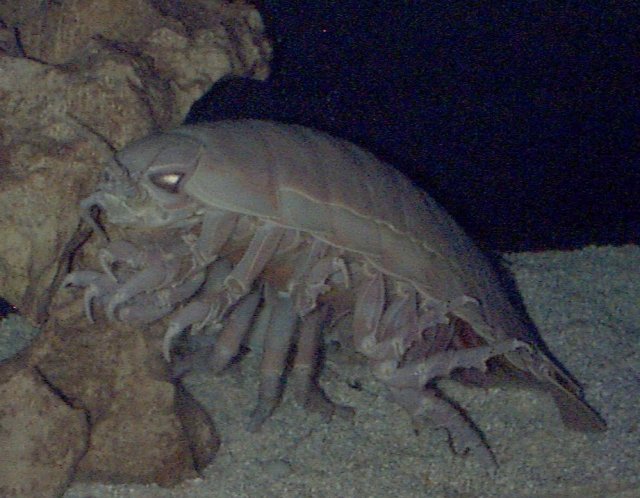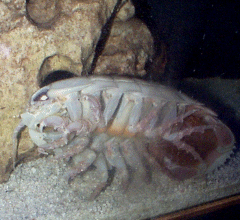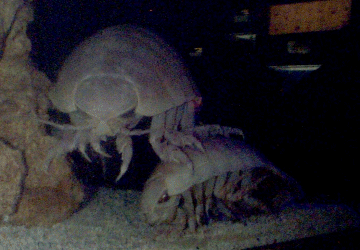Source Materials and RelatedLinks:Hickman, Clevand P, Jr., and ToddZimmerman. A Field Guide to Crustaceans of Galapagos. Sugar Spring Press, 2000. (Very nice for photos!)
The Smithsonian's World Isopod List:ngof isopod species and descriptions:
http://www.nmnh.si.edu/iz/isopod/
St Petersburg Times story on Isopodsat the Florida Aquarium:
http://www2.sptimes.com/Aquarium/EEEEEEK.html
University of Arizona Tree of Life: Isopods
http://phylogeny.arizona.edu/tree/eukaryotes/animals/arthropoda/crustacea/isopoda/isopoda.html


